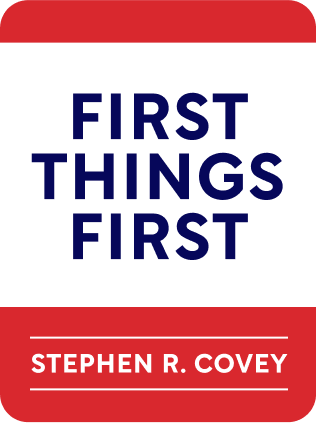

This article is an excerpt from the Shortform book guide to "First Things First" by Stephen R. Covey. Shortform has the world's best summaries and analyses of books you should be reading.
Like this article? Sign up for a free trial here .
What is a personal mission statement and why is it important? What does Stephen Covey say about a personal mission statement for one’s life?
According to Stephen Covey, writing a personal mission statement is a critical first step in the process of goal setting. Its serves as an inspiring reminder of your long-term goals and the principles that you want to guide your life.
Read more to learn how to write an effective personal mission statement, according to Stephen Covey.
The Passion of Vision
Your vision of your life and future is the most powerful tool you have in realizing that life. Your creative imagination allows you to create a vision of the life you want or expect, and that vision has an incredible influence on your behaviors, affecting the choices you make each day and the way you manage your time.
If you have a short-term vision — if you only think a few days or weeks into the future and haven’t given much thought to how you want your life to play out in the long term — then you’ll simply react to what’s in front of you. Your actions and decisions will be based on urgency or your current mood or other people’s suggestions.
If your vision isn’t grounded in reality, your choices won’t reflect an understanding of true north principles and the consequences they bring. This will cause you to make ill-informed decisions (because they’re based on illusion and not reality) that don’t create the results you want or expect.
If your vision is limited to only one area of life (e.g. focusing on financial and social needs while ignoring mental and spiritual development) your actions and choices will create an imbalanced life.
If your vision is based on the social mirror — what society and the people around you say is important or possible — then your choices will be based on other people’s values and expectations. In the process, you’ll lose your connection with your inner self and fail to recognize and appreciate your individuality and unique abilities.
When you have a vision that is based in principles, addresses your human needs, uses your human endowments, and envelopes all roles and aspects of your life, it sparks a passion inside you that is a powerful motivating force.
For example, Gandhi was naturally timid, fearful, insecure, and isolated. He didn’t enjoy his work as a lawyer until he found satisfaction and purpose in helping people with opposing views reach win-win solutions. Inspired by this realization and the injustices he saw against the Indian people, Gandhi developed a vision to create an egalitarian community. As he carried out that vision, his conviction and purpose overcame his timid and insecure inclinations and spurred the growth of his personality and character.
A transcendent vision has the power to eclipse a person’s conditioning and can push you to surpass negative interactions that can consume your time and energy.
Translating a Vision into a Mission
One of the best ways to develop and crystallize your vision is to create a personal mission statement. It takes time and deep self-reflection to develop this statement, which should serve as an inspiring reminder of your long-term goals and the principles and values that you want to guide your life. According to Stephen Covey, your personal mission statement must be informed by your true north principles and four human endowments.
Creating Your Personal Mission Statement
When you sit down to write your own personal mission and vision statement, start by envisioning a future landmark event late in your life, like your 80th birthday or 50th wedding anniversary. Take time to visualize the scene in detail, including the setting and the attendees. Visualize people there from each of the different roles in your life — people from your family, your work, and your community.
Now imagine someone from each of these areas of your life is giving a toast or speech in your honor. If you’d fulfilled each of your roles to your fullest potential, what would these people say about you, your character, your actions, and your contributions? What impact have you made in their lives?
With this in mind, write down each of your roles in life (again, it’s best to keep this number to seven or less). Next to each role, write down what you visualized someone saying about you and your contributions in that role. How do you feel as you look at this vision of what your life could amount to?
This is the basis for your personal mission statement. You’ll take this vision and translate it into a principle-based mission that incorporates all four of your basic human needs — to live (physical), to love (social), to learn (mental), and to leave a legacy (spiritual) — and utilizes your four human endowments.
Stephen Covey: Personal Mission Statement & Human Endowments
According to Stephen Covey, an effective personal mission statement must incorporate all four human endowments (self-awareness, conscience, creative imagination, and independent will) and be realistic enough to be attainable.
Self-awareness is necessary to understand your needs and unique capabilities. This endowment allows you to examine your paradigms and motives and evaluate how they are impacting your behavior and your life. Self-awareness also allows you to become aware of your conscience.
Conscience gives you the power to recognize your unique purpose. In each of your roles, no one can contribute in the unique way you do; no one can parent your child the way you do, or manage your team the way you do, or contribute to your community the way you do. You are a unique individual with an equally unique purpose and ability to contribute to those around you. Your conscience helps you to discover that unique purpose, and that is a central part of your mission statement.
Conscience also helps you to recognize whether your vision and motivations are in line with true north principles. As we discussed, aligning your actions and trajectory with true north principles is the only way to achieve quality of life. Use your conscience to ensure that both the purpose you’ve identified and the methods you intend to use to achieve that purpose are aligned with principles.
Creative imagination helps you translate your vision and values into words to create your personal mission statement. With your vision and purpose in mind, use your creative imagination to figure out a way to map out a personal mission statement that expresses that vision. Once you have your mission statement, use your creative imagination to practice visualization and envision yourself carrying out your personal mission; this exercise further ingrains your mission statement in your mind and heart and makes it easier to live out each day in pursuit of that mission.
Independent will gives you the strength to pursue your personal mission statement, even when it means working against your conditioning, existing habits, or environment. In essence, independent will helps you to exercise discipline, which keeps you in line with your vision.
Key Traits of an Effective Mission Statement
According to Stephen Covey, your personal mission statement should have the following characteristics:
- It reflects a strong connection with your deep inner life and recognition of your deepest and best self.
- It recognizes and incorporates your unique purpose and ability to contribute.
- It’s grounded in self-transcendence, or living to contribute to a higher purpose beyond yourself.
- It addresses all four human needs: physical, social, mental, and spiritual.
- It includes a purpose and methods of achieving that purpose that are based on true north principles.
- It incorporates your vision as well as your values: What kind of person do you want to be and what accomplishments do you want to make? Values without vision make you directionless, and vision without values can create someone like Hitler.
- It balances all the important roles in your life — personal, family, work, and community.
- It inspires you.
Living Out Your Mission Statement
According to Stephen Covey, your personal mission statement is a critical first step to grasping your big-picture goals and values, but you must then translate it into your day-to-day life. You need to revisit your mission statement frequently — and even set aside some time each year to update and revise it — so that you internalize your mission and live it out each day.
Effective time management that creates a high quality of life starts with a vision and an empowering mission statement that reflects that vision; that’s why writing your personal mission statement is one of the most important Quadrant II activities you can do. But in order to be truly useful, you need to continually revisit it.

———End of Preview———
Like what you just read? Read the rest of the world's best book summary and analysis of Stephen R. Covey's "First Things First" at Shortform .
Here's what you'll find in our full First Things First summary :
- How to work effectively, not just efficiently
- Why you need to think more about what you're spending time on than how much time you're spending
- The 6 steps to effectively schedule and prioritize important activities






